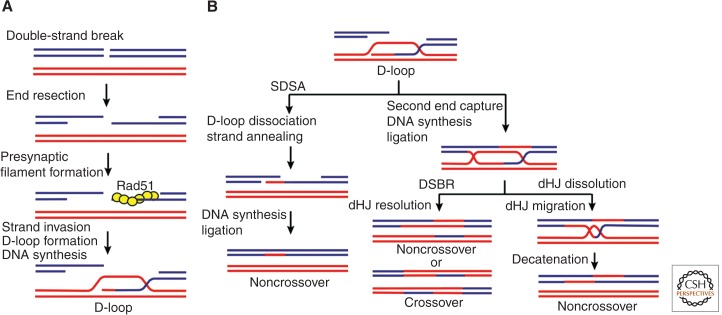Figure 1.
DNA double-strand break repair (DSBR) by homologous recombination. (A) Nucleolytic resection of the DNA ends produces 3′ ssDNA overhangs, one of which is engaged by the Rad51 recombinase to form a presynaptic filament capable of locating and invading a homologous sequence. The free end in the resulting D-loop then primes DNA synthesis. (B) The extended D-loop can be resolved by one of several pathways. Synthesis-dependent strand annealing (SDSA), being the most prevalent noncrossover mechanism in mitotic cells, entails D-loop dissociation by a helicase. If the second DNA end is captured, then a double Holliday junction (dHJ) will form. Resolution of the dHJ by a HJ resolvase, as in DSBR, yields either noncrossover or crossover recombinants. Alternatively, the dHJ can be dissolved via convergent migration of the two DNA junctions and DNA decatenation to yield noncrossover products.

